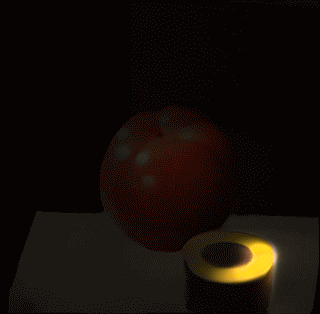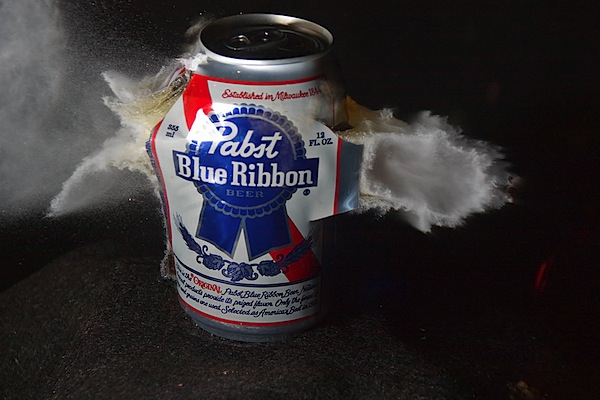 The first is that the photograph itself may be taken in a way as to appear to freeze the motion, especially to reduce motion blur. The second is that a series of photographs may be taken at a high sampling frequency or frame rate. The first requires a sensor with good sensitivity and either a very good shuttering system or a very fast strobe light. The second requires some means of capturing successive frames, either with a mechanical device or by moving data off electronic sensors very quickly.
Other considerations for high-speed photographers are record length, reciprocity breakdown, and spatial resolution.
The first is that the photograph itself may be taken in a way as to appear to freeze the motion, especially to reduce motion blur. The second is that a series of photographs may be taken at a high sampling frequency or frame rate. The first requires a sensor with good sensitivity and either a very good shuttering system or a very fast strobe light. The second requires some means of capturing successive frames, either with a mechanical device or by moving data off electronic sensors very quickly.
Other considerations for high-speed photographers are record length, reciprocity breakdown, and spatial resolution.Bell laboratories used the system, which ran 16 mm film at 1000 frame/s and had a 100-foot (30 m) load capacity, to study relay bounce. When Kodak declined to develop a higher-speed version, Bell Labs developed it themselves, calling it the Fastax. The Fastax was capable of 5,000 frame/s. Bell eventually sold the camera design to Western Electric, who in turn sold it to the Wollensak Optical Company. Wollensak further improved the design to achieve 10,000 frame/s. Redlake Laboratories introduced another 16 mm rotating prism camera, the Hycam, in the early 1960s.[3] Photo-Sonics developed several models of rotating prism camera capable of running 35 mm and 70 mm film in the 1960s. Visible Solutions introduced the Photec IV 16 mm camera in the 1980s.
Now a new technique in high speed image capture, called Femto Photography, consists of femtosecond laser illumination, picosecond-accurate detectors and mathematical reconstruction techniques. Our light source is a Titanium Sapphire laser that emits pulses at regular intervals every ~13 nanoseconds. These pulses illuminate the scene, and also trigger our picosecond accurate streak tube which captures the light returned from the scene.
 The streak camera has a reasonable field of view in horizontal direction but very narrow (roughly equivalent to one scan line) in vertical dimension. At every recording, we can only record a '1D movie' of this narrow field of view. In the movie, we record roughly 480 frames and each frame has a roughly 1.71 picosecond exposure time. Through a system of mirrors, we orient the view of the camera towards different parts of the object and capture a movie for each view. We maintain a fixed delay between the laser pulse and our movie start time. Finally, our algorithm uses this captured data to compose a single 2D movie of roughly 480 frames each with an effective exposure time of 1.71 picoseconds.
The streak camera has a reasonable field of view in horizontal direction but very narrow (roughly equivalent to one scan line) in vertical dimension. At every recording, we can only record a '1D movie' of this narrow field of view. In the movie, we record roughly 480 frames and each frame has a roughly 1.71 picosecond exposure time. Through a system of mirrors, we orient the view of the camera towards different parts of the object and capture a movie for each view. We maintain a fixed delay between the laser pulse and our movie start time. Finally, our algorithm uses this captured data to compose a single 2D movie of roughly 480 frames each with an effective exposure time of 1.71 picoseconds.

 MIT Media Lab; Project Director Ramesh Raskar explains that the scan like nature of this camera can reflect off the walls and reach back to the camera to reveal hidden objects in the next room. In the same way that a bat can avoid objects in mid flight, so can the light bounce off the walls and creates a image from the wave like properties. Raskar goes on to to mention that light bouncing off fruit, and its uniform glow determines its ripeness. Though looking at the images to the femto second will possible light based radar applications, its limitations are that it can not capture arbitrary events at picosecond time resolutions. The resolution is set at 1.71 picosecond for an area no smaller then 0.5mm, which dismisses the molecular world.
MIT Media Lab; Project Director Ramesh Raskar explains that the scan like nature of this camera can reflect off the walls and reach back to the camera to reveal hidden objects in the next room. In the same way that a bat can avoid objects in mid flight, so can the light bounce off the walls and creates a image from the wave like properties. Raskar goes on to to mention that light bouncing off fruit, and its uniform glow determines its ripeness. Though looking at the images to the femto second will possible light based radar applications, its limitations are that it can not capture arbitrary events at picosecond time resolutions. The resolution is set at 1.71 picosecond for an area no smaller then 0.5mm, which dismisses the molecular world.Raskar is hopeful that the applications will extend in medical uses particularly in endoscopy, as its ability to look around corners could come handy for hard to reach areas.
High speed photography changed the way we see the world particularly in sport and action, slow moving bullet time became a way for film makers to see in detail a series of events. Shortening the capture time further to the picosecond allows us to see how each individual ray of light acts of the surfaces it visits. This radar like effect has lots more uses in the field of medicine or for search and rescue. It is hoped that this whole system will be miniaturized for a handhold device. Who knows this kind of camera might one day reach to the consumer market and allow us to buy the ripest fruit or look past corners.


No comments:
Post a Comment